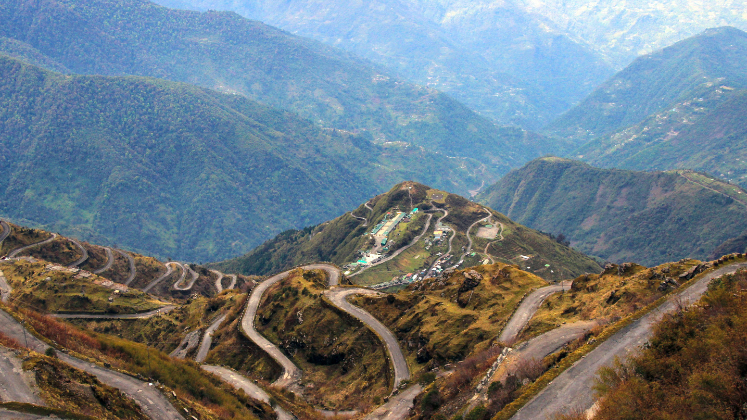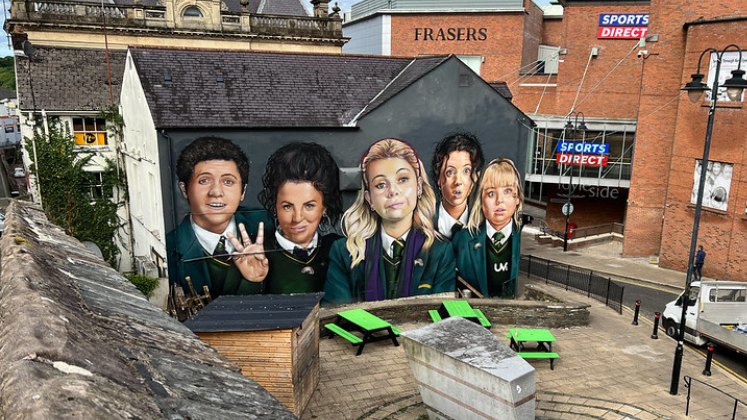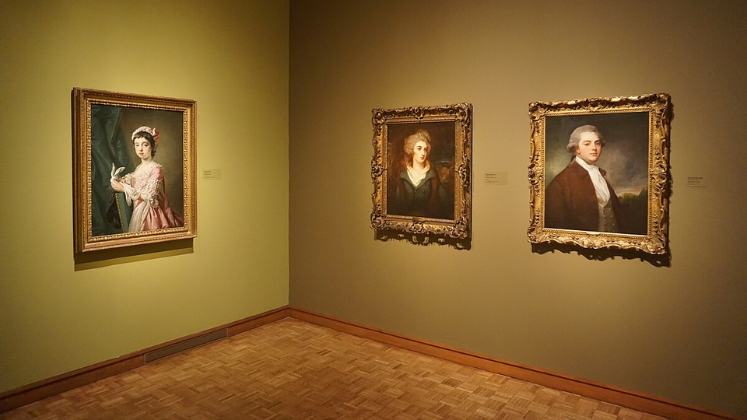As India gets ready for its general elections this spring, attention is drawn to the role of religion and nationalism in campaign politics. This article puts Partha Chatterjee’s critiques in conversation with Benedict Anderson’s theory of imagined communities, with Hindu nationalism as an ideal site of analysis.

One of the foremost experts on nationalism, Benedict Anderson, describes the nation as a creation—a link between people that did not exist prior to its acknowledgment.
“Nation is an imagined community and imagined as both inherently limited and sovereign… The nation is imagined as limited because even the largest of nations, encompassing perhaps a billion living human beings, has finite, demarcated boundaries beyond which lie other nations and it is imagined as sovereign because the concept of the nation was born in an age when the Enlightenment and Revolution challenged the legitimacy of the divinely-ordained, hierarchical dynastic realm. Finally, it is imagined as a community because the conception of a nation is an agreed-upon dream or a horizontal comradeship shared by people who do not know each other and would not know each other and still share the same concept of the nation despite the persistence of inequalities and exploitative relations between them.”
This comradeship is based on a presumed communal image, an image that is institutionalised on recognition of a shared commonality. Therefore Anderson wrote, “Ultimately, this fraternity makes it possible, over the past two centuries, for so many millions of people, not so much to kill, as willingly to die for such limited imaginings”
Nationalism and the Convergence of Capitalism and Print Media
Nationalism, Anderson noted, developed in the 18th and 19th centuries in the United States, Brazil, and the former Spanish colonies, much earlier than in most of Europe. The development of nationalism, Anderson argued, was caused by the convergence of capitalism and print media. Anderson saw the advent of the nation as a product of print capitalism, where the invention of the printing press fuelled the development of vernacular publishing and the decline of pan-cultural sacred scripts (Latin). The formation of new reading publics encouraged the development of new conceptions of human community delineated along linguistic lines, this new sense of the community was used to justify political independence and, therefore, the idea of the nation-state. The emergence of the printing press allowed overarching identity discourses to be published across various vernacular languages, which led to a sameness and diffusion of ideas linked to the nation.
Challenging Anderson: Partha Chatterjee’s Critique
A challenging critique of Anderson’s work came from Partha Chatterjee, who raised the question, “Whose imagined community?” in an essay published in 1996. Chatterjee challenged Anderson’s idea of modular forms of nationalism developed in the West as providing the mould or framework for various anti-colonial nationalisms. Chatterjee raised crucial questions on the legitimacy of such claims. From a postcolonial nation’s perspective, Anderson’s ideas seem problematic; how could all anti-colonial nationalism be subsumed as a mere borrowing of Western concepts of nationalism?
Chatterjee argued that in many colonised nations, an anti-colonial nationalism had already developed and remained within the non-colonised, traditional, inner domain where the coloniser could assert little power. After a point, it was externalised or became public through novels and newspapers and this articulation of nationalism, embedded in the distinctness of the traditional or the spiritual, became the foundation of many anti-colonial nationalisms. Such expressions of an “inner” nationalism were further found in popular novels like Ghare Bhaire (The Home and the World) by Rabindranath Tagore in 1916, paintings of Raja Ravi Varma, and so on.
Another critique of Anderson’s theory of imagined community is the concept of imagination itself. When we say that a community as a whole comprises a nation, it is difficult to understand how the constituents of a particular community would share the same image; for many people, India as a nation also means being a Hindu, Tamil, Bengali, or Hindi speaker. For many people, being Hindu is a precondition to the national identity of being an Indian, over and above the federal or state condition. The idea of a singular homogenised collective imagination can be problematic.
Situating Anderson’s Idea of Imagined Community to Understand Hindu Nationalism
The rise of Hindu nationalism in India is a complex phenomenon rooted in a long history of cultural, political, and religious developments. Benedict Anderson’s theory that countries are socially manufactured entities based on a shared sense of identity among a group of people who may never meet or interact with one another, provides a valuable foundation for analysing this occurrence.
Hindu nationalism emphasises the significance of a shared Hindu culture and history to foster a national identity among Hindus in India. This is accomplished by promoting images and stories that strengthen Hindu pride and identity and foster a sense of belonging among Hindus who may never meet or interact. The Hindu nationalist movement in India gained momentum in the 1980s and 1990s, primarily due to the political influence of the Bharatiya Janata Party (BJP). BJP’s ideology of Hindutva, derived from the contentious Vinayak Damodar Savarkar, emphasised the cultural and religious unity of Hindus and asserted that Hindus are the true heirs of Indian civilisation. One of the key symbols used by the BJP during the 1980s to promote the idea of Hindutva was televising the Hindu epic Ramayana, “aired at a time when the Ayodhya movement was gathering steam, the TV series had a far more significant impact of a kind that print-capitalism had in eighteenth-century Europe”.
The Role of Symbols and Narratives in Hindu Nationalism
Ramachandra Guha, the famous Indian historian, also talked about this linkage in one of his books India After Gandhi: “The televised epic was introducing subtle changes in this pluralistic and decentralised religion, long divided into sects each worshiping different deities, lacking a holy book, a unique and singular good, or a single capital of the faith. Now in front of their television sets, for the first time, all Hindus across the country watched the same thing: the serial introduced a congregational imperative into Hinduism”.
Narratives are another tool used by Hindu nationalists to strengthen their sense of self. Advocates of Hindutva frequently portray Hindus as victims of Muslim invaders who destroyed their temples and forced their religion upon them. This story supports the notion that Hindus are historically oppressed and must band together to defend their identity and culture. This story also supports the idea of Hindu exceptionalism, which contends that Hinduism is superior to Islam and Christianity and is best equipped to meet India’s cultural and spiritual demands.
Hindu nationalism in India can be understood through Anderson’s theory of imagined community, wherein a particular set of symbols and narratives are used to reinforce a shared history and culture. These symbols and narratives are then used to create a sense of community among Hindus, strengthening their identity and the Hindu nationalist project in turn.





